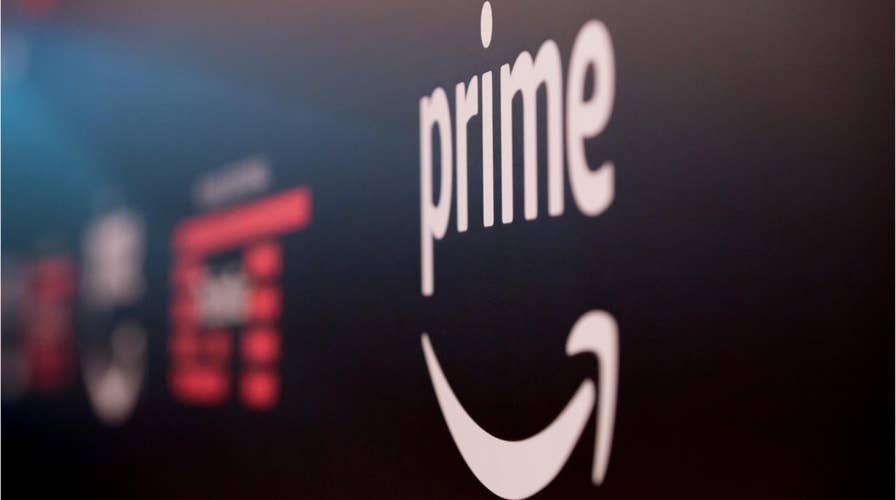How to avoid the Amazon Prime price hike
Amazon announced that it will increase its Prime membership to $119 effective May 11. Here are a few ways to avoid the price hike.
Amazon is betting its Prime service is indispensable to you.
The online giant — which was responsible for 44 percent of all U.S. e-commerce sales in 2017 — announced that it would raise the cost of its annual Prime membership service to $119 effective May 11. Current customers will have until June 16 to renew at the $99 rate, at which point they, too, will have to shell out more money for those Prime perks.
The price hikes will also affect Prime Student customers, who will see a $10 increase, from $49 to to $59 per year.
It's the second time Amazon has increased the annual cost of its Prime service since 2014, when it raised the price from $79 to $99.
More From Tom's Guide
The price hike shouldn't come as too big of a surprise, though, considering that Amazon just raised the price of its month-to-month plan earlier in the year.
Still, nobody likes a price hike, and while we appreciate all the freebies that come with Prime, we prefer to keep the extra $20 in our pocket. Fortunately, there are ways to dodge or lessen the cost of Amazon's price hike. Here are a few below.
Share with a family member
Have a family member who also uses Amazon Prime? Great, you just cut the cost of your Prime membership in half. Amazon lets you share the benefits of Prime with one other adult who lives in your household. Both adults will have to link their accounts via the Amazon Household dashboard and agree to share payment methods. Once that's done, you're set. Best of all, you can still keep your buying history private from one another.
But what if you want to share your Prime account with a friend or relative who doesn't live in your household? While it's technically possible to share your login with a close friend and set up separate addresses and credit cards for each other, you run the risk of accidentally charging items to the wrong account. So, you're better off sharing with someone in your household or someone you really trust and feel comfortable sharing your credit card info with.
Sign up for a student account
If you're a student with a valid .edu address, you're in luck. You can use that .edu email to create an Amazon Prime Student account, which costs $59 per year. Moreover, students get a free six-month trial instead of the 30-day trial that standard Prime members receive. For benefits, you get the same list of Prime perks, with just a few catches. First, your discount lasts only four years or until graduation, whichever comes first. So the sooner you register, the more years you’ll get out of it. Moreover, students can't share their accounts with other family members. Sorry, Mom and Dad.
Downgrade to a month-to-month plan
Although Amazon's month-to-month plan ($12.99/month) could cost more than an annual membership, you can save a significant amount of money if you limit your Amazon shopping to only part of the year. For instance, you can purchase a monthly membership for the busiest months of the year, like Black Friday season (November, December) and Prime Day (July). Even if you added another two months, for a total of five months, you'd still pay only $64.95 total, versus $119 per year for the full Prime membership.
Clearly, Amazon prefers its users not do this, because studies have shown that Prime members spend significantly more than their non-Prime counterparts.
Give yourself the gift of Prime
Current Prime members can gift themselves a Prime membership at its current $99/year cost and then redeem their gift on the day their current membership ends. First, purchase Prime as a gift to yourself before May 11. On the last day of your current Prime membership — and after your Prime perks have stopped — redeem your Prime gift. You now have another year of Prime at $99. Keep in mind that if you redeem your Prime gift beforehand, Amazon will turn your Prime gift into a $99 credit. So make sure to end your current membership on your last day and then redeem your Prime gift.
Buy from Amazon's competitors
Amazon isn't the only retailer with free shipping. Companies such as ShopRunner offer free two-day shipping (and free returns) from over 100 different retailers, including Newegg, Staples, and Neiman Marcus. ShopRunner offers a 30-day trial and costs $79 per year after that. (It also offers month-to-month plans at $8.95 per month.) Better yet, ShopRunner occasionally offers promos where you can get a full year of ShopRunner for free.
For strictly tech deals, Newegg offers its Premier service for $49.99 per year (with a bonus free month for first-time customers). Premier can be shared with up to four friends, gives you access to exclusive deals and dedicated customer service, and offers free two-day shipping. It also comes in six-month ($29.99/month) or three-month ($19.99/month) plans.
Another Prime alternative comes courtesy of Amazon's biggest rival, Walmart. The brick-and-mortar giant offers speedy two-day shipping on a variety of products, as long as you meet the $35 minimum-purchase requirement. Walmart is also in the process of installing multiple Pickup Towers, massive in-store kiosks that make it easy to pick up your online orders.
If you prefer to receive free shipping sitewide, you may want to check out Target. Customers who use a Target REDCard (Target Debit Card, Target Credit Card or Target Mastercard) receive free shipping on all orders with no minimum purchase required. (Non-RED holders get free shipping with purchases of $35+.) You'll also receive 5 percent off your purchases (certain items like prescriptions and gift cards are excluded).





















